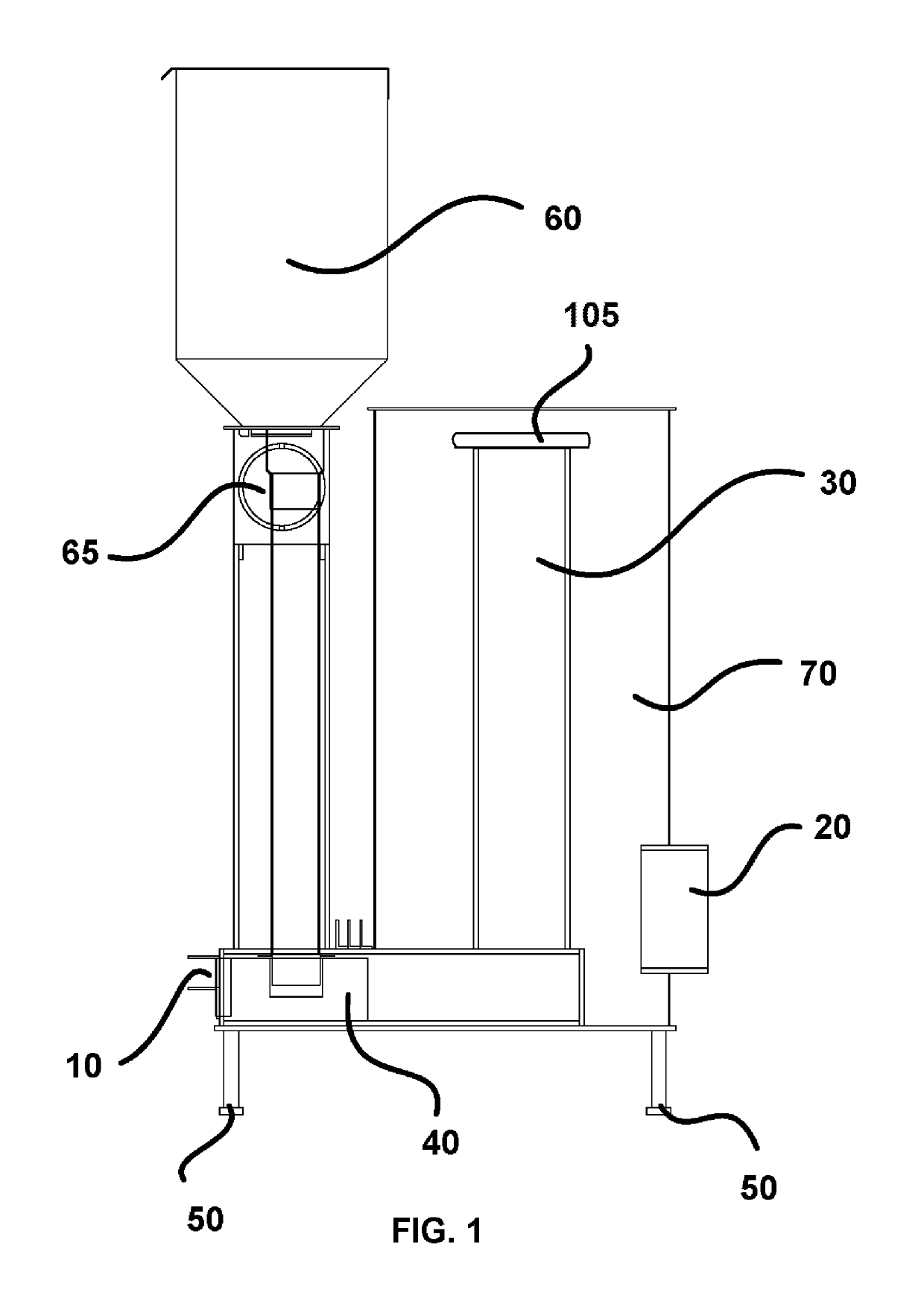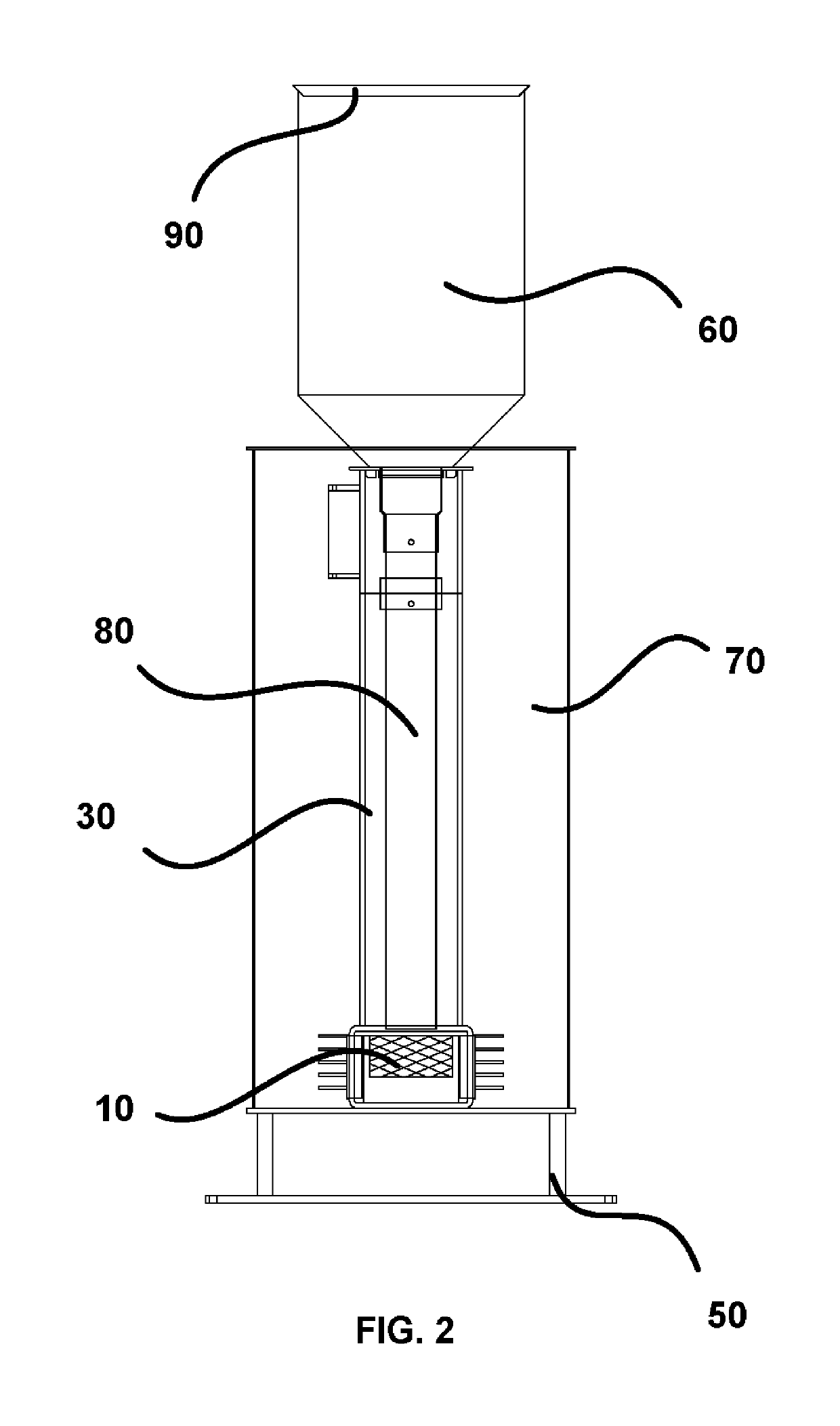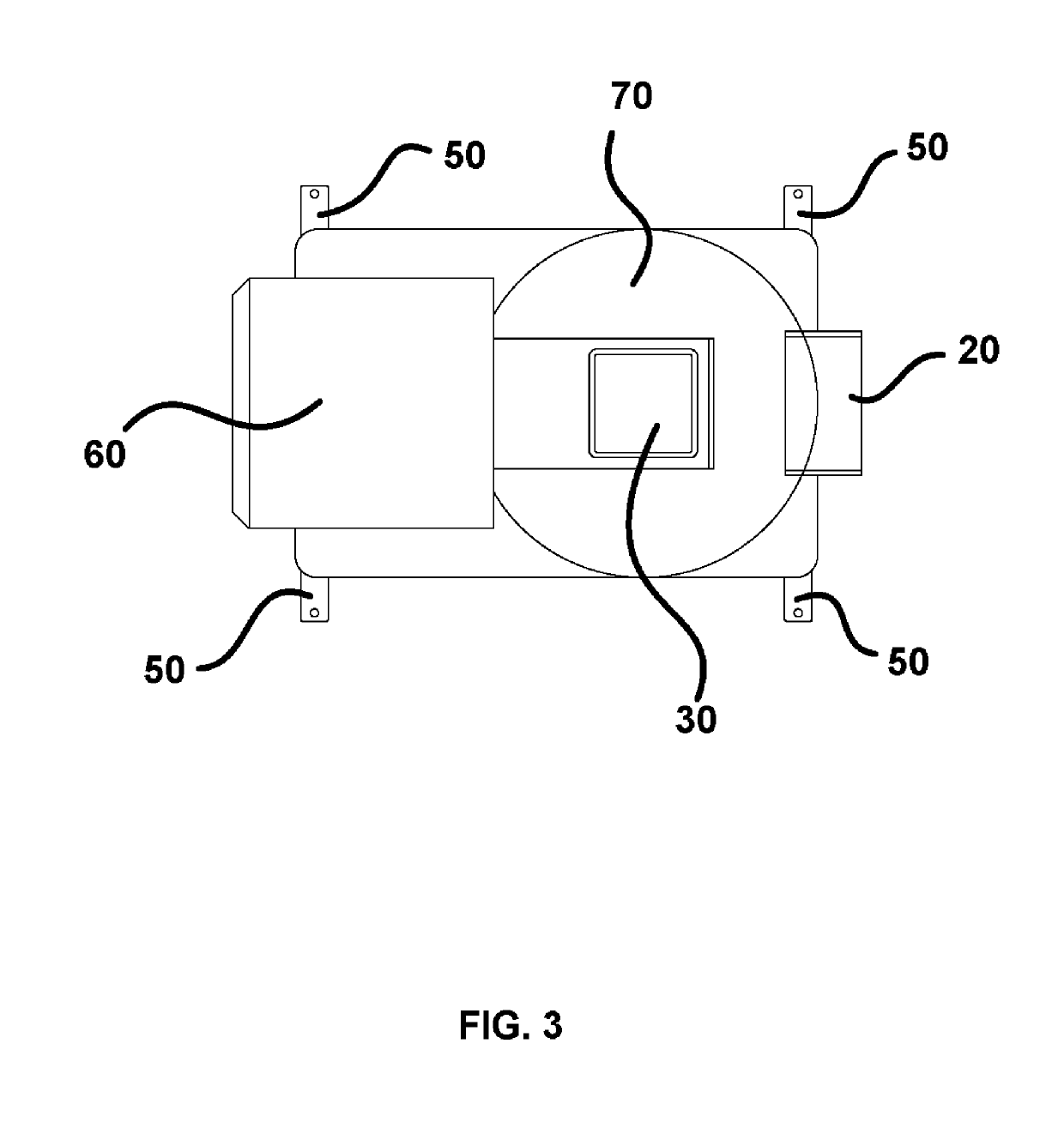Highly efficient wood stove/heater
a wood stove and high-efficiency technology, applied in the field of high-efficiency rocket heaters, can solve the problems of high operating costs of electric heaters, and inefficient heating of structures and occupants, and achieve the effects of high efficiency, clean burning, and present invention
- Summary
- Abstract
- Description
- Claims
- Application Information
AI Technical Summary
Benefits of technology
Problems solved by technology
Method used
Image
Examples
Embodiment Construction
[0026]The present invention is a highly efficient indoor heater system configured for safe use within a home, business, or other structure equipped with a chimney. The present invention is equipped with a front access door (10), at least one exhaust (20), and internal chimney (30), a stove combustion area (40) (known to be a combustion chamber), a convection chamber (70), a gravity-fed fuel chute (80), and support struts (50). Most of the construction of the present invention is fashioned of metallic alloys capable of withstanding heat of over 1000 degrees Fahrenheit. Some embodiments of the present invention are preferably equipped with a pellet hopper (60), which is configured to feed fuel pellets into the gravity-fed fuel chute (80) to supply fuel to the fire. The pellet hopper (60) is preferably equipped with a pellet hopper lid (90), which ensures that the system remains closed, and that cool outside air does not enter the structure. When the pellet hopper (60) is not used, a c...
PUM
 Login to View More
Login to View More Abstract
Description
Claims
Application Information
 Login to View More
Login to View More - R&D
- Intellectual Property
- Life Sciences
- Materials
- Tech Scout
- Unparalleled Data Quality
- Higher Quality Content
- 60% Fewer Hallucinations
Browse by: Latest US Patents, China's latest patents, Technical Efficacy Thesaurus, Application Domain, Technology Topic, Popular Technical Reports.
© 2025 PatSnap. All rights reserved.Legal|Privacy policy|Modern Slavery Act Transparency Statement|Sitemap|About US| Contact US: help@patsnap.com



